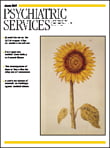What Your Patients Need to Know About Psychiatric Medications
This book is essentially a collection of patient education handouts about psychotropic drugs written by two psychiatrists, Robert Hales and Stuart Yudofsky, and a pharmacist, Robert Chew. It comes with a CD that the clinician can use to generate individual printed handouts. These handouts are of two types: information about a class of medications—for example, selective serotonin reuptake inhibitor antidepressants—and information about a specific drug, such as sertraline.
As soon as I started reading this book, it was immediately apparent that it founders on the rock of readability. For example: "anticonvulsants…may be effective by controlling 'kindling' in the areas of the brain from which the psychiatric disorder emanates. Kindling is a phenomenon that occurs when repeated subthreshold stimulation…."
Patient handouts should be easy to read, which means that they should be written at about a grade 6 reading level. Patient information provided by the American Medical Association, the American Academy of Family Physicians, and the U.S. Pharmacopoeia is written at an average reading level of grade 5 or 6.
So, how is reading level measured? It's easy; you use Simple Measure of Gobbledygook (SMOG), Fog, or Flesch-Kincaid. These are all scales that measure reading level by using such items as average sentence length and number of words with three or more syllables.
Applying these scales to a randomly picked section of the book resulted in the following conclusions. SMOG assessed the readability at grade 14. The Fog index score is 16; the ideal is 7 or 8. Above 12 indicates it is too difficult. Finally, the Flesch-Kincaid Grade Level Index, which can be automatically calculated on your Microsoft Word documents, is grade 12.
Furthermore, in addition to not being easy to read, the book has no illustrations. It attempts to explain the biochemical theories of mental illness to patients without any diagrams. Even texts for psychiatrists have pictures.
So, unless you work in a university student health service—and even in this setting the book should have illustrations—I would not recommend this book.



